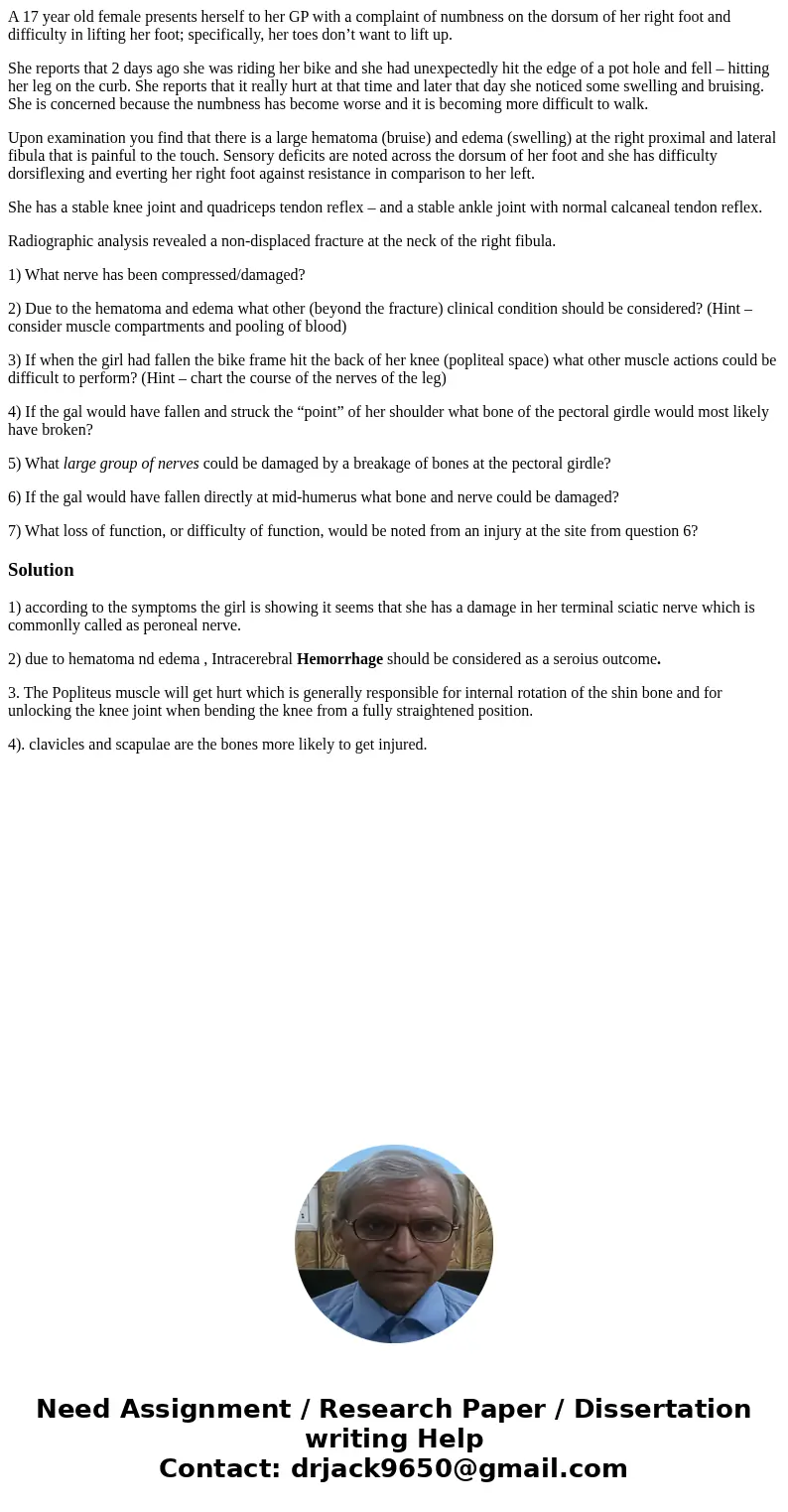A 17 year old female presents herself to her GP with a compl
A 17 year old female presents herself to her GP with a complaint of numbness on the dorsum of her right foot and difficulty in lifting her foot; specifically, her toes don’t want to lift up.
She reports that 2 days ago she was riding her bike and she had unexpectedly hit the edge of a pot hole and fell – hitting her leg on the curb. She reports that it really hurt at that time and later that day she noticed some swelling and bruising. She is concerned because the numbness has become worse and it is becoming more difficult to walk.
Upon examination you find that there is a large hematoma (bruise) and edema (swelling) at the right proximal and lateral fibula that is painful to the touch. Sensory deficits are noted across the dorsum of her foot and she has difficulty dorsiflexing and everting her right foot against resistance in comparison to her left.
She has a stable knee joint and quadriceps tendon reflex – and a stable ankle joint with normal calcaneal tendon reflex.
Radiographic analysis revealed a non-displaced fracture at the neck of the right fibula.
1) What nerve has been compressed/damaged?
2) Due to the hematoma and edema what other (beyond the fracture) clinical condition should be considered? (Hint – consider muscle compartments and pooling of blood)
3) If when the girl had fallen the bike frame hit the back of her knee (popliteal space) what other muscle actions could be difficult to perform? (Hint – chart the course of the nerves of the leg)
4) If the gal would have fallen and struck the “point” of her shoulder what bone of the pectoral girdle would most likely have broken?
5) What large group of nerves could be damaged by a breakage of bones at the pectoral girdle?
6) If the gal would have fallen directly at mid-humerus what bone and nerve could be damaged?
7) What loss of function, or difficulty of function, would be noted from an injury at the site from question 6?
Solution
1) according to the symptoms the girl is showing it seems that she has a damage in her terminal sciatic nerve which is commonlly called as peroneal nerve.
2) due to hematoma nd edema , Intracerebral Hemorrhage should be considered as a seroius outcome.
3. The Popliteus muscle will get hurt which is generally responsible for internal rotation of the shin bone and for unlocking the knee joint when bending the knee from a fully straightened position.
4). clavicles and scapulae are the bones more likely to get injured.

 Homework Sourse
Homework Sourse